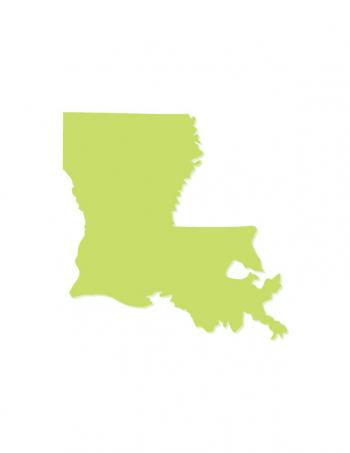Wetlands program teaches environmental principles
By Bruce Schultz
bschultz@agcenter.lsu.edu
BATON ROUGE – Fourth-grade students at the LSU University Lab School learned about wetlands and their importance in an LSU AgCenter program that gets kids out of the classroom with a hands-on learning experience.
The program is offered to schools throughout the state at no charge, funded by a grant from the Louisiana Coastal Protection and Restoration Authority.
Mindy Brooks, of the LSU AgCenter 4-H Youth Wetlands Program, said 102 University Lab School students participated in a recent event.
Classes at each of six stations were taught by high school seniors who went through the class first to learn the details. “Now they are turning around and teaching it to the fourth-graders,” Brooks said.
Brooks said the program has been presented throughout the state since August.
Usually the program is staffed by various agencies, including the LSU AgCenter, Louisiana Sea Grant and the Louisiana Department of Wildlife and Fisheries.
The program puts students into the environment they learn about, Brooks said. “It gets them outside, and it gets them exposed to wetlands topics. We are teaching them to open their eyes and become stewards of our wetlands.”
The experience also demonstrates that science doesn’t just take place in exotic, far-flung settings. “There are cool things you can find just in your backyard,” she said.
One of the sessions involved a scavenger hunt. Students probed the ground and removed leaves to find out what crawling critters lurk beneath their feet.
Alice Leotta and Evan Burgos-Dugas uncovered the biggest surprise of the day, a scorpion – a crustacean normally associated with a dry environment.
Leotta found it, but Burgos-Dugas made the identification. “She figured out it was a scorpion,” Leotta said.
The scorpion escaped later, but students had collected a variety of beetles, spiders and snails.
Corbin Nguyen found a spider. “I learned that spiders live in wetlands,” he said. “And the water cycle never ends.”
Corbin’s mother, Melissa Nguyen, volunteered to help for the morning. “It’s neat. I think they’re learning a lot of things,” she said. “I’m impressed with how much they already know.”
Another fourth-grader, Avery Yeargain, listed the things she learned in the session. “I learned there are swamps in wetlands. There are a lot of insects and bugs and creatures that are very interesting. And gross.”
Hill Mittendorff said he learned about dissection. “I learned that the cypress tree is the state tree of Louisiana, and Louisiana is mainly a wetland.”
Elise Lathom said she didn’t catch any bugs. “Bugs freak me out, but sometimes they can be fun.”
Steve Babcock, high school environmental science teacher, said his 14 students improved their understanding of the physical world.
“If you can teach it, you really know the concepts,” Babcock said. “It forces them to reach deeper in their understanding.”
Because the high school seniors didn’t know what the fourth-graders would ask, they learned to think quickly, he said.
Two of his students, Nick Brossette and Khristian Mims, worked the station where participants dissected owl pellets – a bolus of regurgitated bones and feathers that owls cannot digest.
Mims said he enjoyed teaching the youngsters. “It was actually fun. I coach a Little League team, and I like to be around kids.”
“I’d do it again,” Brossette said.
Brossette and Mims asked their students if they knew what owl pellets are. “It’s barf,” several students quickly told him.
Hudson Berthelot got excited quickly after starting dissecting his pellet. “We got a tooth,” he said.
Madeline Franques was unfazed by the tiny bones from dead creatures. “We found three jaws,” she said.
Photo Corbin Nguyen, a fourth-grader at University Lab School on the LSU Campus in Baton Rouge, watches a spider he caught in a scavenger hunt during the Youth Wetlands Day conducted by the LSU AgCenter 4-H Youth Wetlands Program. (Photo by Bruce Schultz)
Photo Steve Babcock, environmental science teacher at the LSU University Lab School, talks with students about what they found from dissecting an owl pellet during a recent wetlands day. Students are, left to right, Hudson Berthelot, Jeffrey Barker and Victoria Pereira. The owl pellets contain bits of bone and feather that owls cannot digest after eating small animals. (Photo by Bruce Schultz)
Photo Alice Leotta, at right, and Evan Burgos-Dugas examine the insects and other critters found during the Youth Wetlands Day. (Photo by Bruce Schultz)
- Log in to post comments

